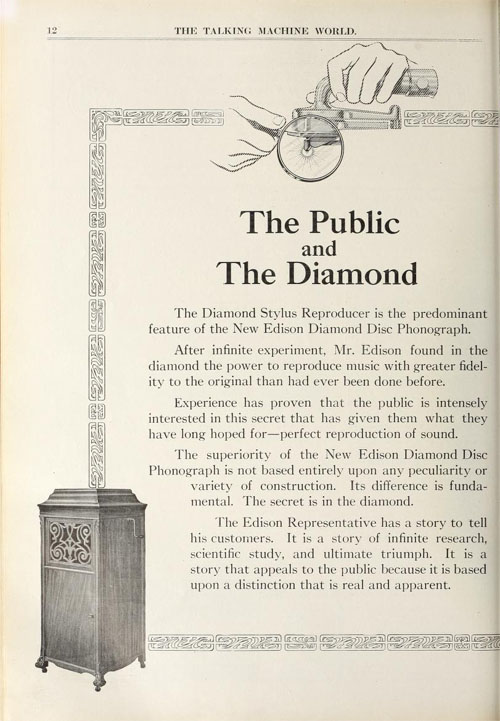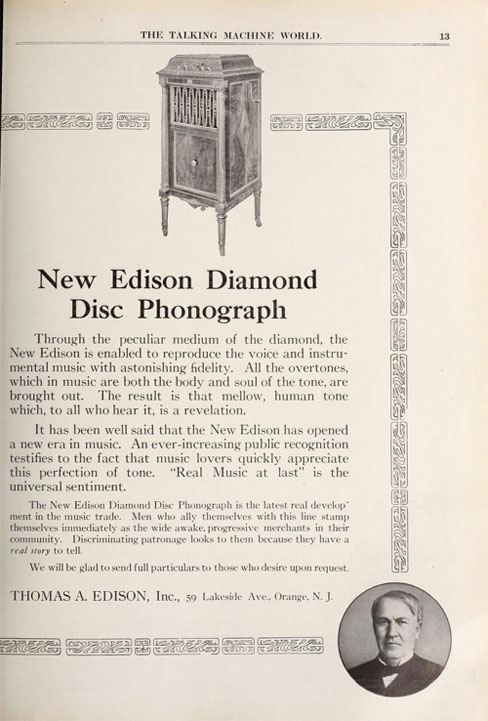Phonographs
and Sewing Machines
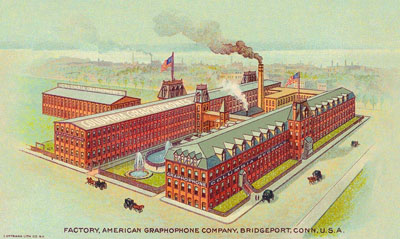
Phonograph Connections
with the Sewing Machine
By Doug Boilesen
2020
An April
6, 1878 Punch cartoon showed the maid of the house frightened
by the new scientific device called a Phonograph. The cartoon
illustrated the essentials of the phonograph - it was a machine
that talked, its parts were exposed, it had a crank for power,
it could be mistaken for a sewing machine and it was even dependent
on a needle to function.
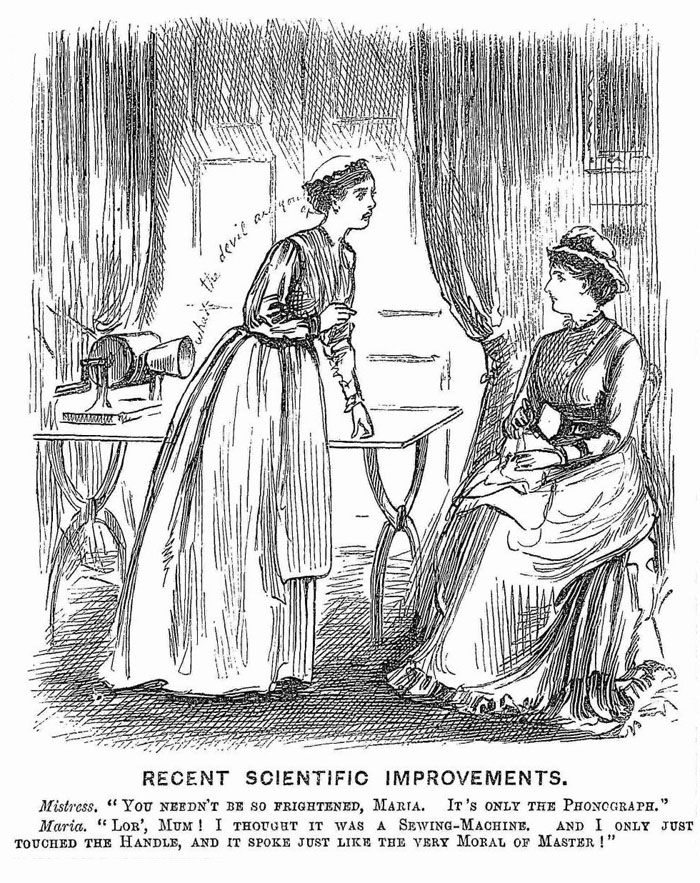
Punch
April 6, 1878
The similiarity between the sewing
machine and the phonograph was often noted in early descriptions
of the Phonograph. In an article about the early phonograph
and its future Philip G. Hubert described the phonograph in
the February 1889 issue of The Atlantic as follows:
"The
new phonograph takes up, with its table, about the space occupied
by a sewing-machine, and might at first be taken for one "
(1)
.
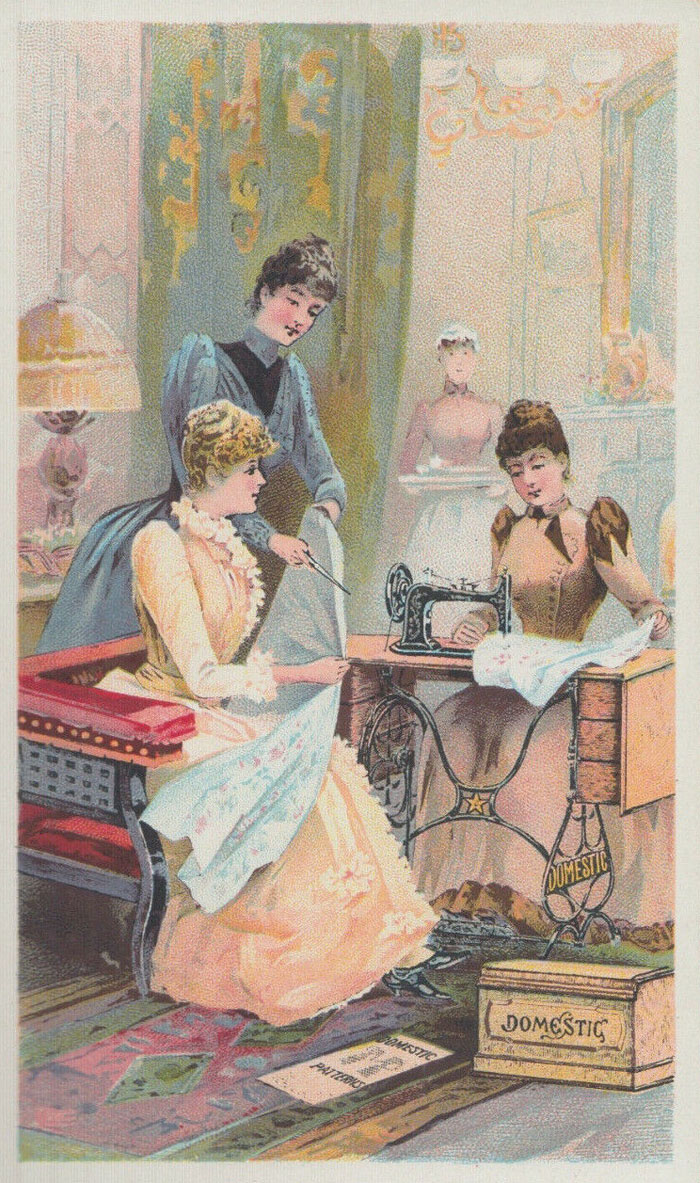
Domestic
Sewing Machine Company Trade card
circa 1885
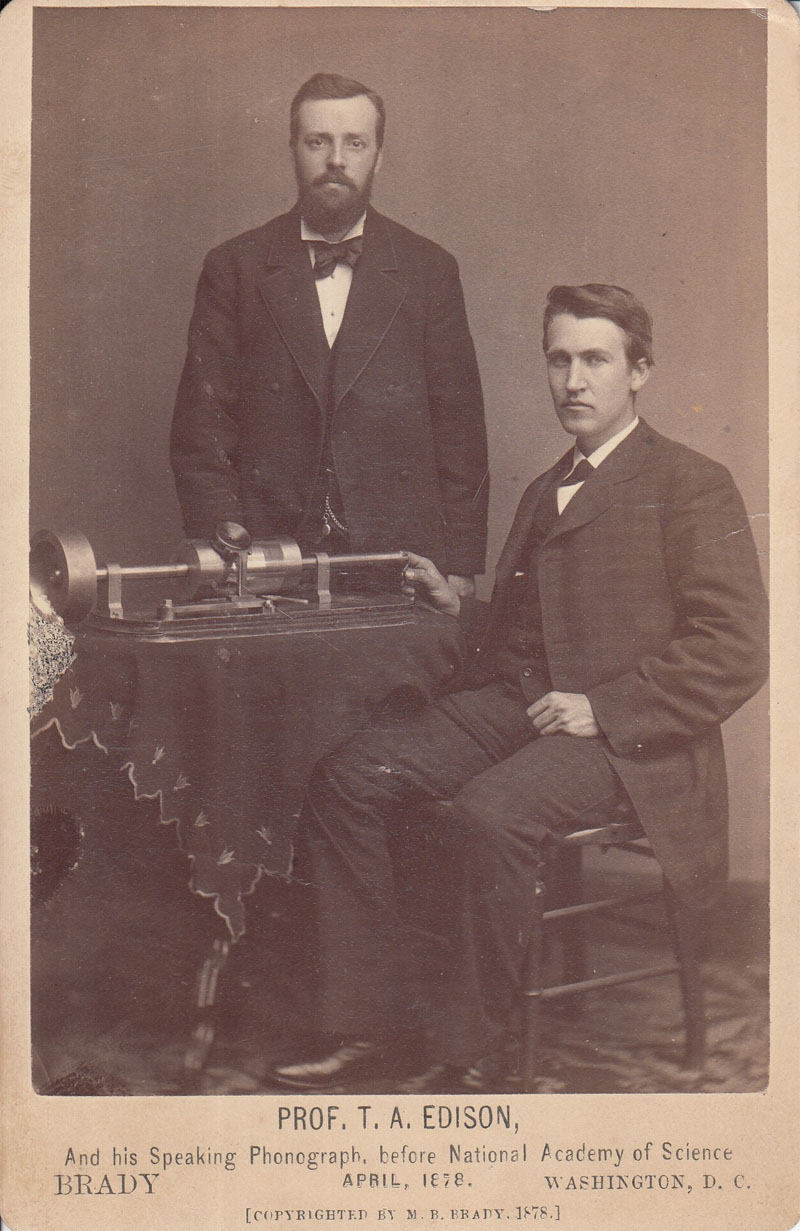
Edison seated
with his 1878 "Brady" tinfoil phonograph and Charles
Batchelor, Edison's chief assistant at Menlo Park, standing
next to Edison. This 1878 tin-foil phonograph is called the
"Brady phonograph" by collectors because it was the
machine pictured in the photograph taken at the Mathew Brady
Studio on April 19, 1878. (Wikimedia
Commons courtesy of U.S. National Park Service)
Charles Batchelor
had a connection with the sewing machine industry before he
went to work for Edison.
FACTOLA: Mr.
Charles Batchelor was a very skillful mechanic who was sent
"from England to superintend the setting up and adjusting
of the automatic thread machinery for the Clark Thread Works."(1A)
FACTOLA: Mr.
John Kruesi, the associate of Edison and his machinist who built
the first tin-foil Phonograph in December 1877, came to the
United States in "1870 and went to work for the Singer
Sewing Machine Company at Elizabethport.
FACTOLA: Charles
N. Worth, "one of Edison's principal Newark machinist worked
for the Singer Sewing Machine Co., before joining Edison in
the fall of 1870." He would join Edison at Menlo Park as
a machinist in the fall of 1873. (Edison and the Rise of
Innovation, Leonard DeGraaf, Sterling Publishing, 2013,
p. 24.)
The new phonograph
"is of about the size of a sewing machine."
When Edison brought his Improved
Phonograph into the office of Scientific American in February
1888 (a little more than ten years after the first public demonstration
he gave also at the office of Scientific American, a large
illustration of the new machine and everyone listening were featured
in the article. And how did they start their description of the
perfected phonograph? "The new phonograph...is of about the
size of an ordinary sewing machine."
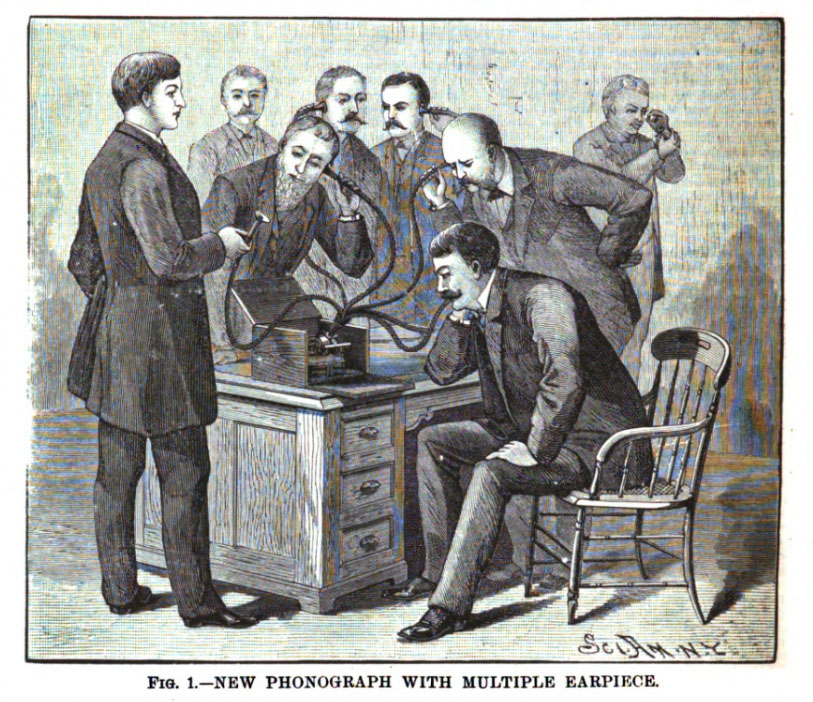

Scientific American Supplement
No. 632, February 11, 1888, 10096. (Courtesy HathiTrust and University
of Michigan)
The Perfected
Phonograph, T. A. Edison, The North American Review,
1888
To use the phonograph,
a little instruction and practice are needed, but much less
than the type-writer requires and hardly more than the training
needed for the operation of a sewing-machine.
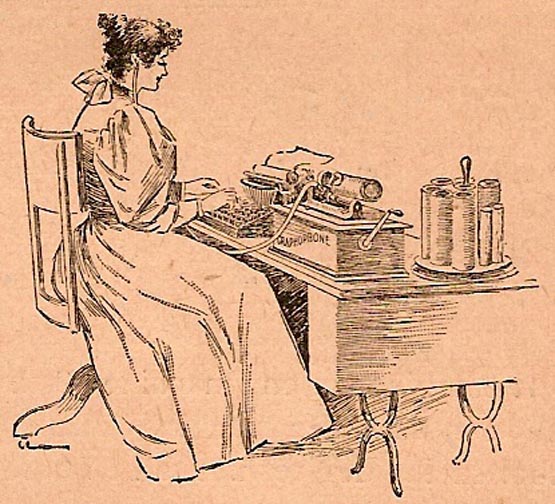
Graphophone dictating
machine and typewriter, 1898 Courtesy of the Early
Office Museum

.
Early Graphophones
were manufactured at the Howe Sewing Machine Factory. Howe closed
their Bridgeport factory in 1887 and it became the American
Graphophone manufacturing plant. Business 'dictation' talking
machines compatible with Edison cylinders were modified treadle
machines. In the Howe factory "many of the same cabinet
makers and finishers continued on in the factory making graphophones
with similiar materials and finishes."
The look and the
similiarities of the early phonograph with the sewing machine
expresed the common identity of those two new household items
-- they were both machines, called machines and thought of as
machines. There was no precedent for what a talking machine
looked like and since the sewing machine entered the home first
it gave the phonograph designs and platforms that could be used.
.
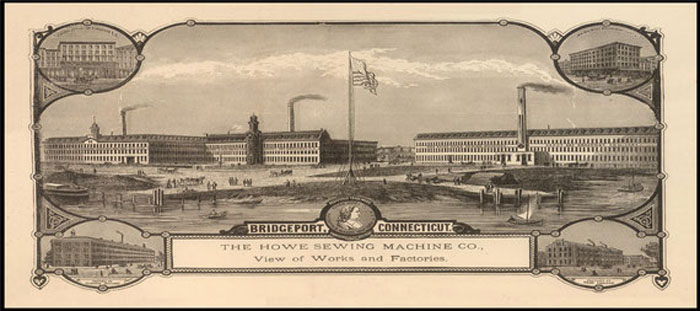
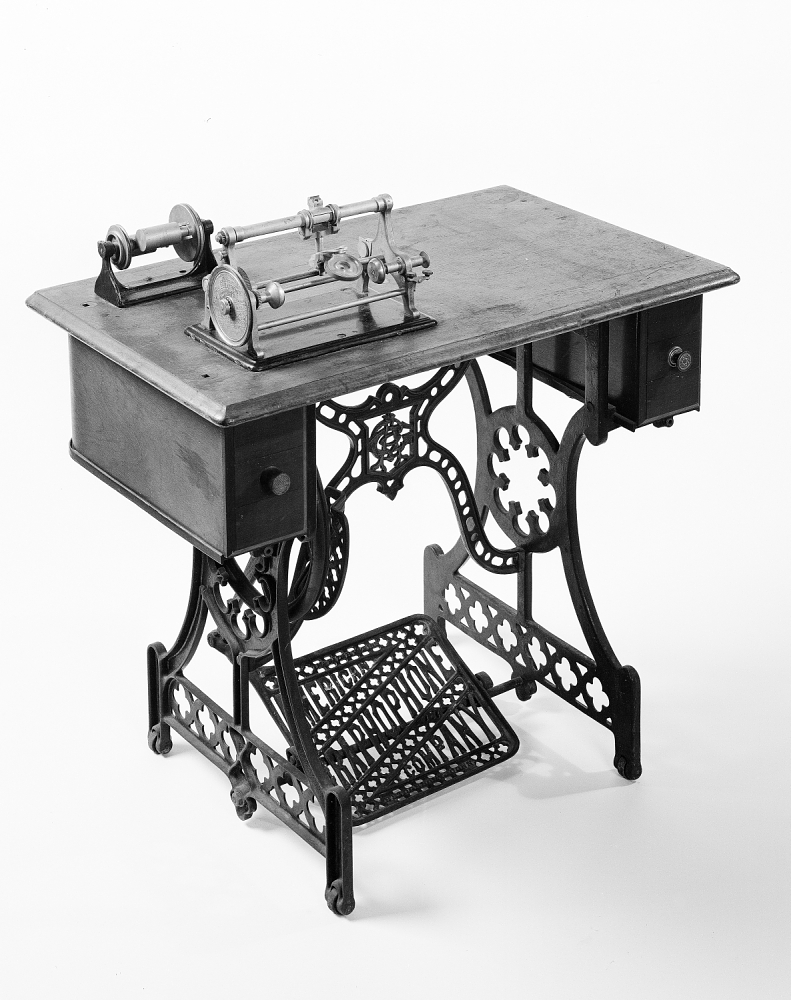
This 1888 business dictation machine
used wax cylinders to record and play back sound.
In these early commercial
machines, the dictation apparatus sat atop a sewing machine
table and employed a treadle to rotate the mandrel holding the
cylinder recording.
Text and photographs
courtesy of The
National Museum of American History.
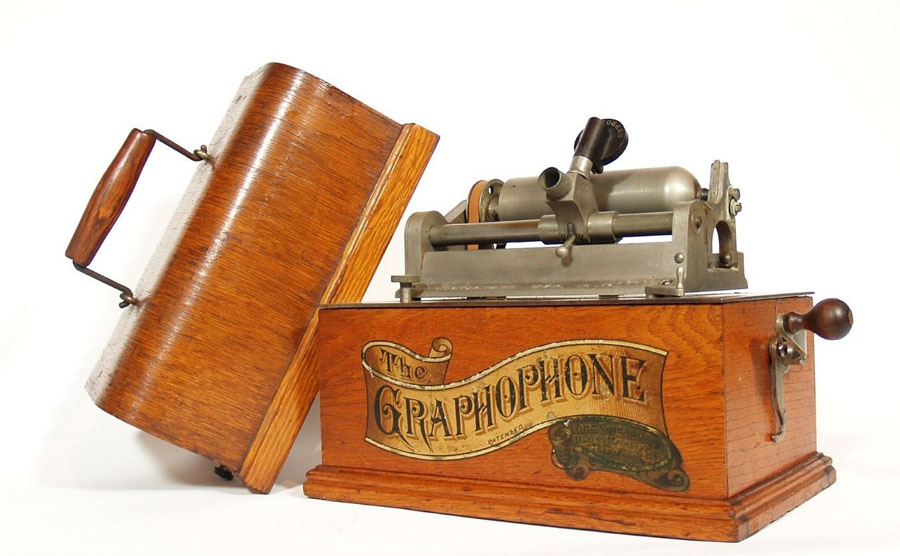
1895 Columbia Graphophone
Model N
.
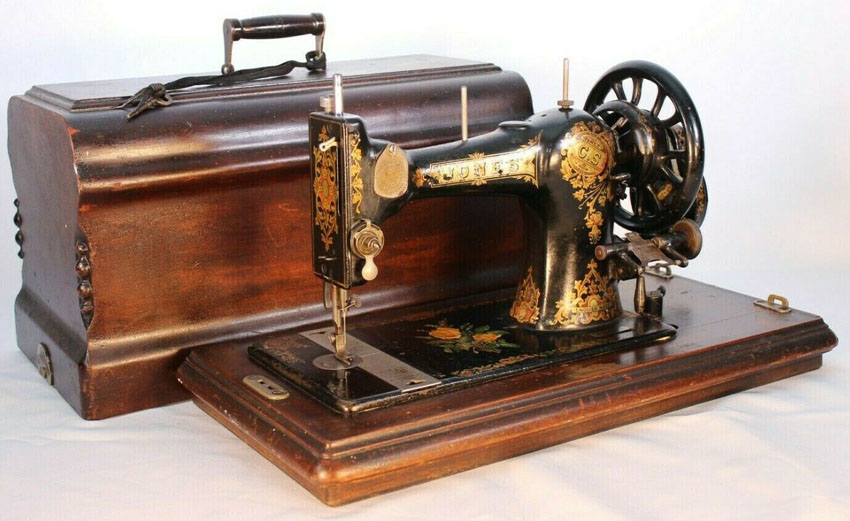
1895 Jones Sewing
Machine with cover
The wooden cases
with their wooden covers and carrying handle gave early Edison
and Columbia home machines a design and portability that has
obvious connections with sewing machines. The talking machine
and the sewing machine would have profound impact on the home
where they often shared the same room of the house, e.g., the
parlor.
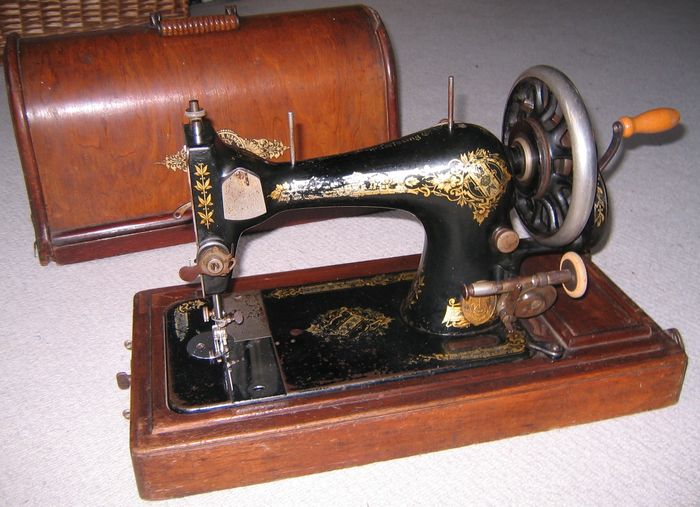
1895 Singer Sewing
Machine with cover
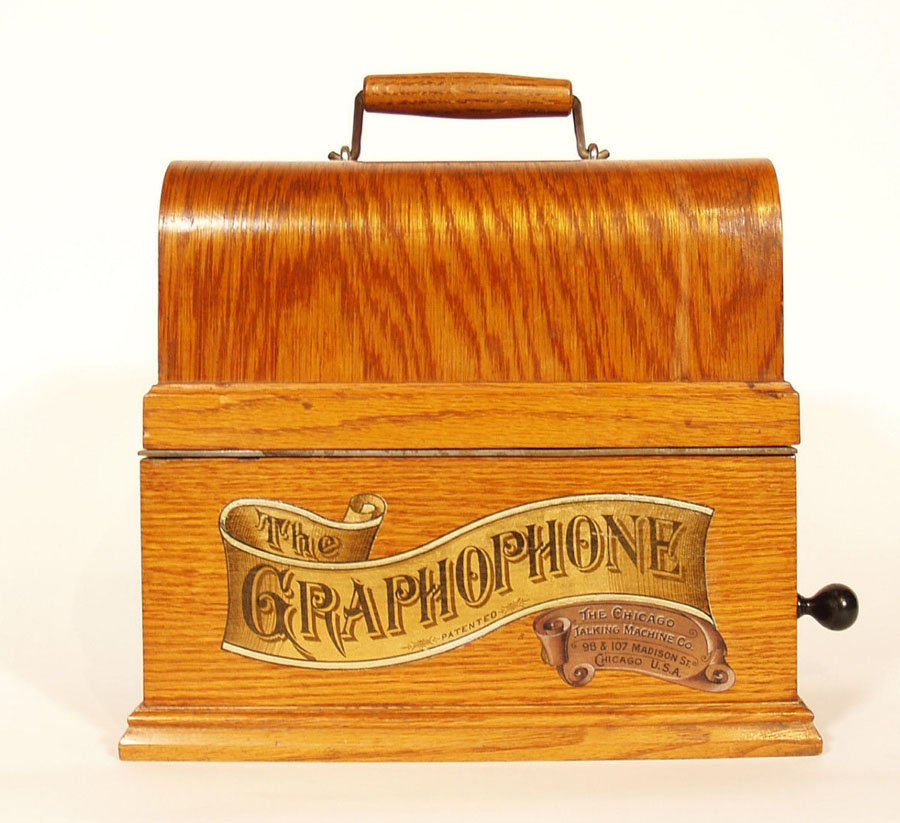
1897 Columbia Graphophone
Model A with lid on the machine (Courtesy of TechnoGallerie)
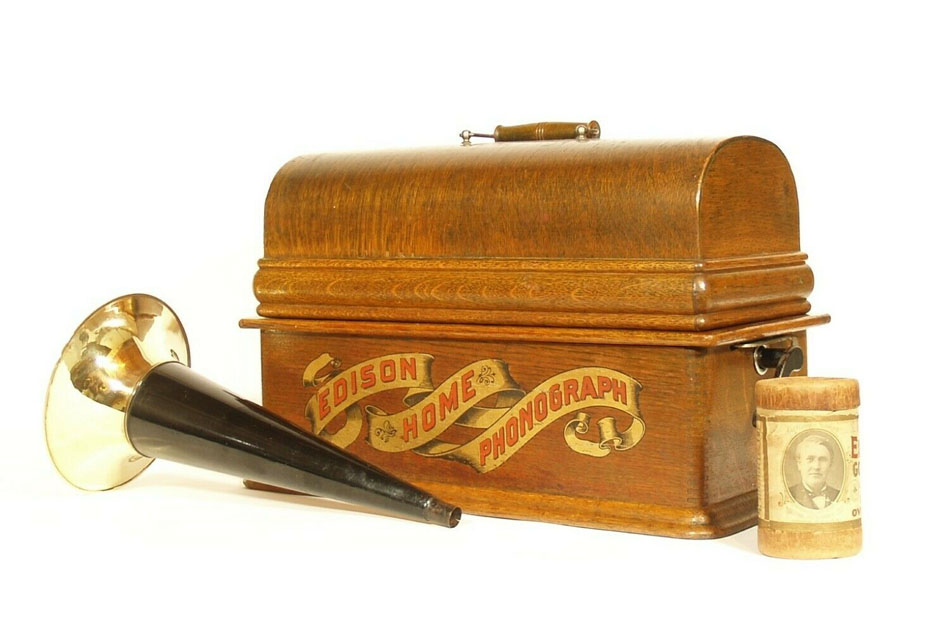
Edison Home Phonograph
Model A Circa 1901 (Courtesy of TechnoGallerie)
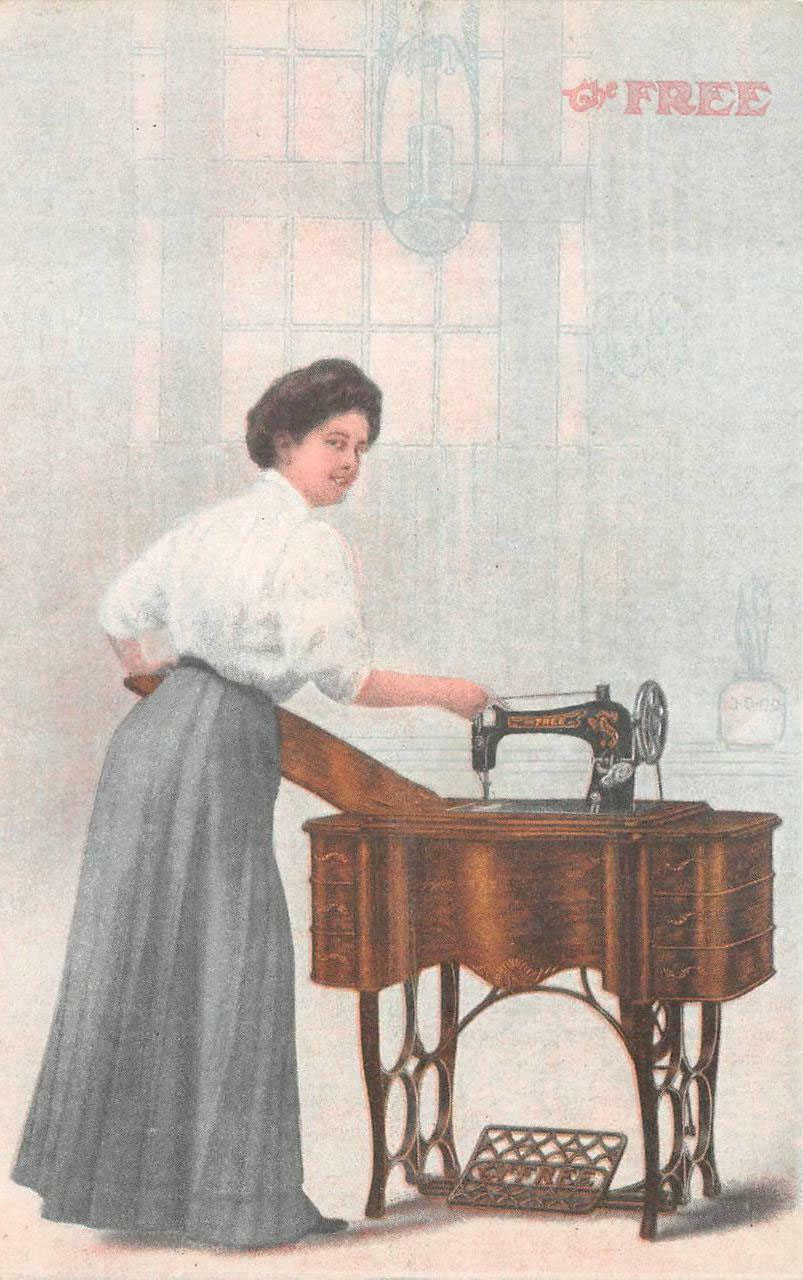
Sewing machines were
often sold by dealers who also sold phonographs such as this
Pennsylvania dealer who sold pianos, organs, phonographs, records,
and sewing machines. This advertising postcard c.1912
features the "Free" Sewing Machine.
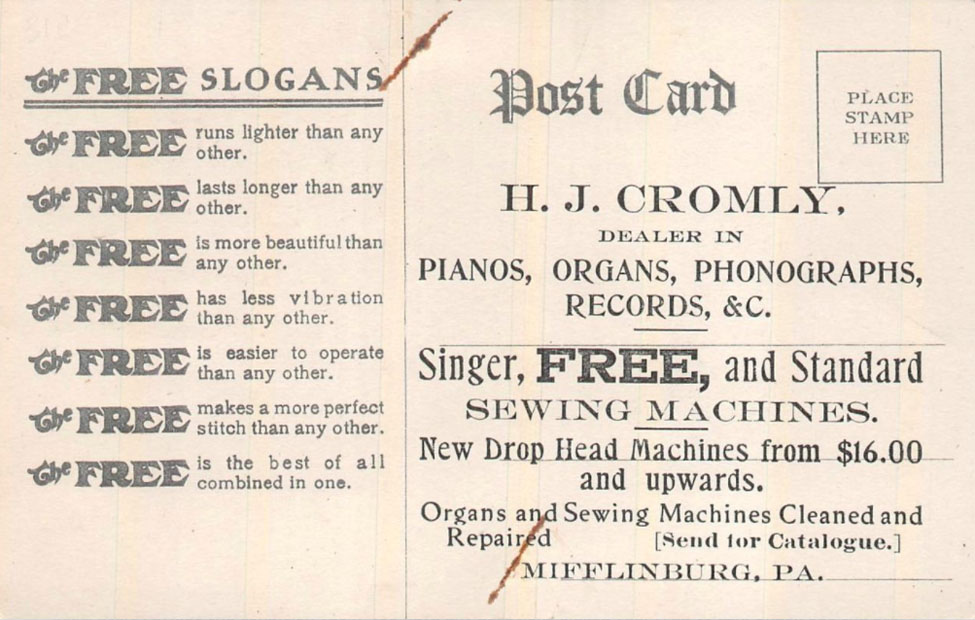
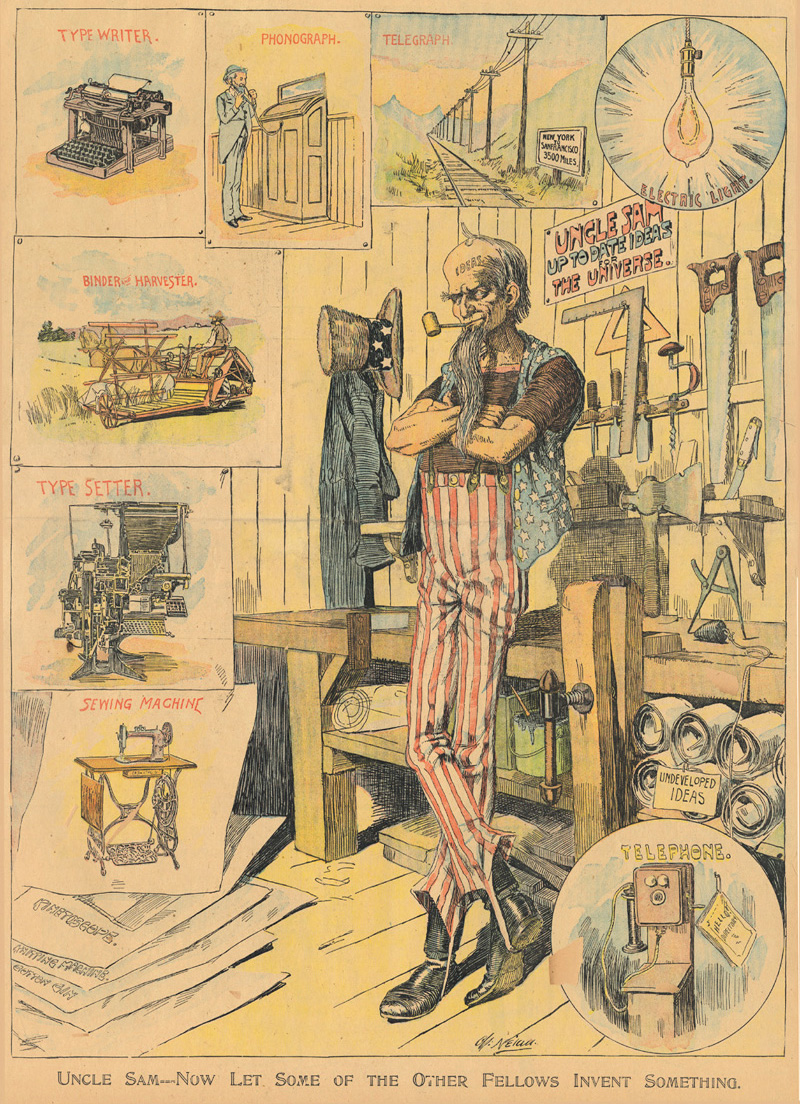
Note that the Phonograph
and the Sewing Machine are two of the prized inventions
of "Uncle Sam--Now Let
Some of the Other Fellows Invent Something" by Charles Nelan,
New York Herald, January 9, 1898 (2)
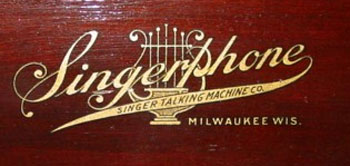
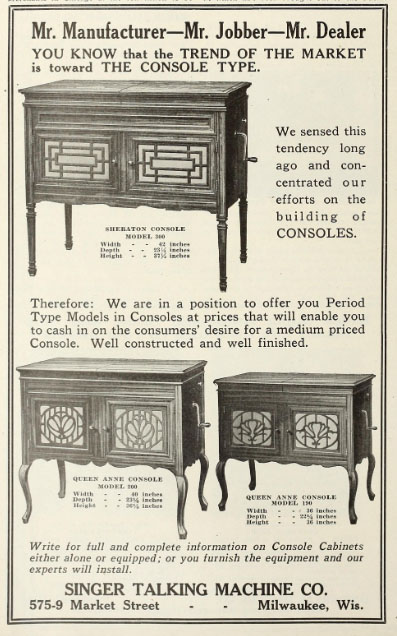
Singer Talking Machine
Co., The Talking Machine World, April 15, 1921
Humor found in
1915 periodicals: What are needles for?
Grandmother: “How
useless girls are today. I don’t believe you know what needles
are for.”
Girl: “How absurd
you are, grandma. Of course I know what needles are for. They’re
to make the graphophone play.”
The Onlooker,
Foley, Alabama, 1915
Uncle Zed Buys
a Graphophone - "Hail Columbia Happy Land talkin' an'
singin' machine"
In May 1920 Columbia
issued a record by Charles Ross Taggart titled "Uncle Zed
Buys a Graphophone." In this 'descriptive monologue"
Uncle Zed has purchased a talking machine but when he takes
it home and expects to hear music nothing happens. Uncle Zed
is completely ignorant that his talking machine needs records
and phonograph needles to produce sounds. He telephones the
clerk who sold him the machine to complain and the following
exchange takes place:
"Say young feller,
that Hail Columbia Happy Land talkin' an' singin' machine
won't make no noise. How in the Sam Hill do you make it
go? Well, he sassed me right to my face and said if I hadn't
been in such a durn hurry to go he would have told me. He
said I needed some see-lections an' some needles to make
it work. "Young man," I says, "you made a
little mistake. I bought a singing machine, not a sewin'
machine." Well, he said it wouldn't sing nor play nor
talk nor nothing without needles, so I told him to send
me a good lively tune and a needle and spool of thread to
sew it on with, and I'd try it again."
Taggart's
portrayal of Uncle Zed as an unsophisticated customer who ends
up offering to sew a tune with a needle and thread to hear a
"good lively tune" shows that the popular culture
of the 1920's understood the places held in the home by the
sewing machine and needles and the talking machine. Some might
even have believed that such confusion was possible for a someone
from the country.
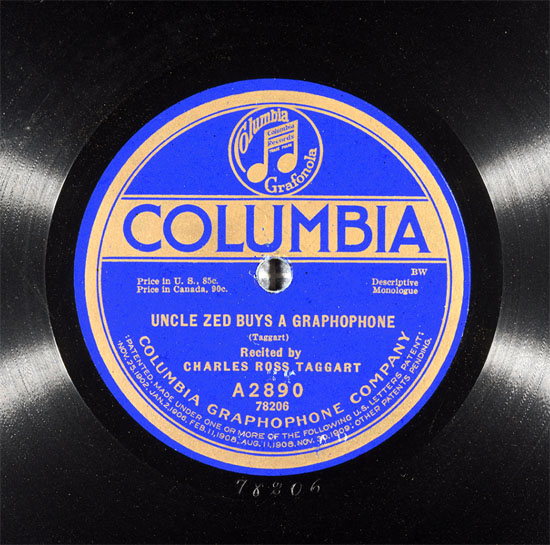
"Uncle Zed Buys
A Graphophone" by Charles Ross Taggart, Recorded December
16, 1918. Label and Recording Courtesy of David Giovanonni and
i78s.org - LISTEN
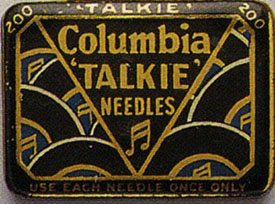

Hail Columbia
Graphophone ad, 1906
Phonograph needles
were sold in colorful tins of 200 like these and in paper packages.
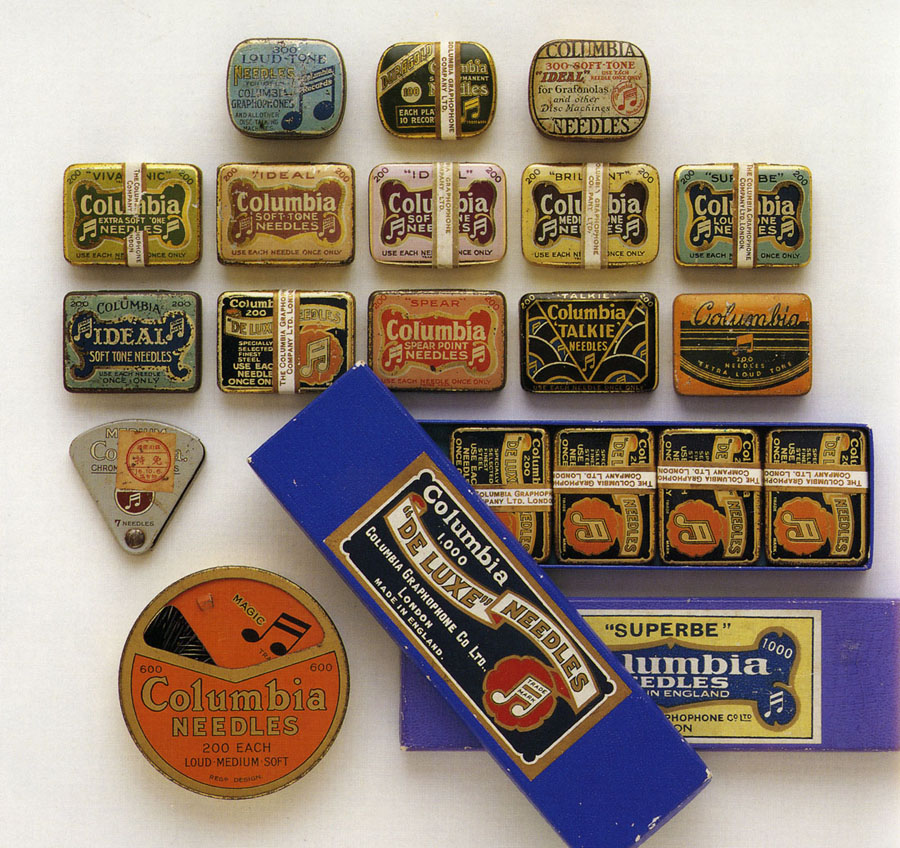
Assortment of Columbia
needle tins courtesy of Arnold
Schwartzman (3)
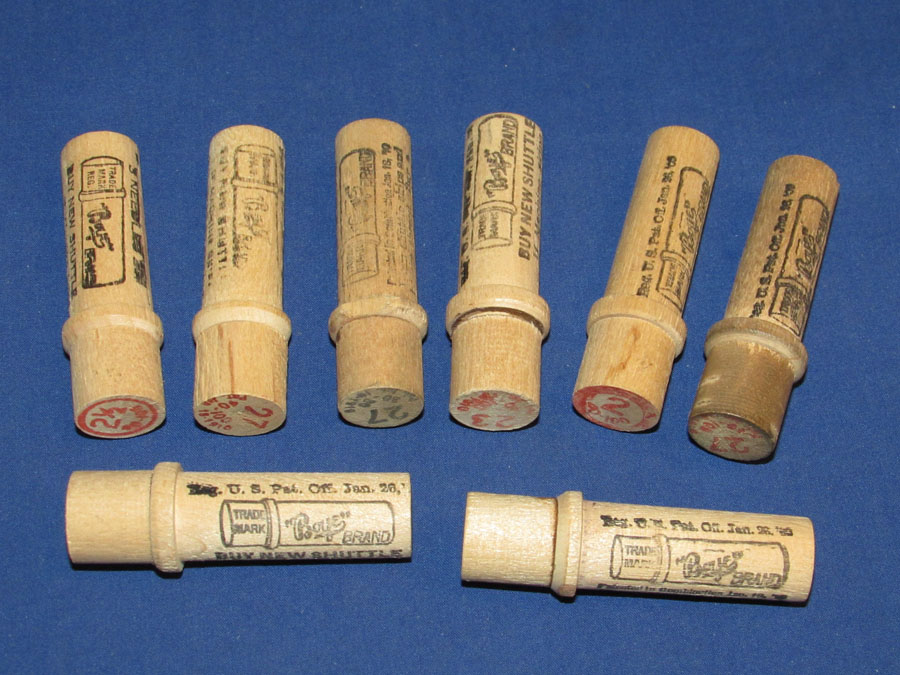
BOYE sewing machine
needles and wooden boxes circa 1910
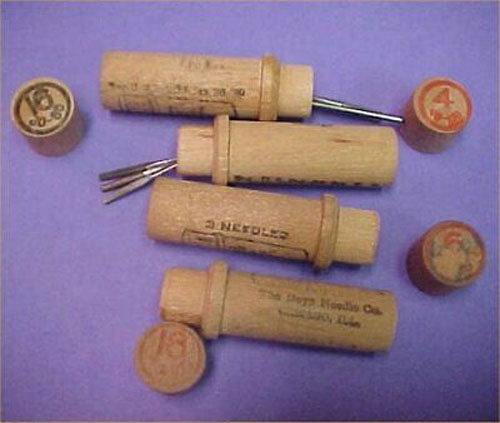
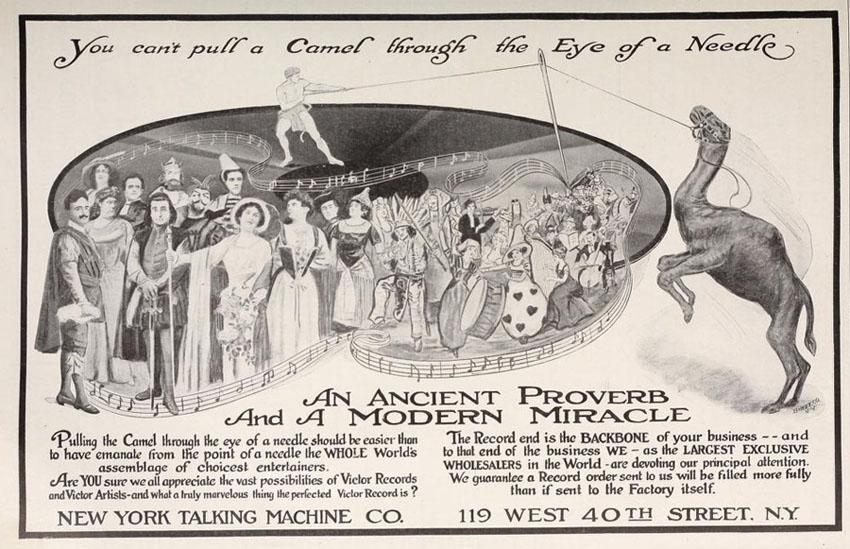
"You can't pull
a Camel through the Eye of a Needle" but that would "be
easier than having the WHOLE World's assemblage of choicest
entertainers emanate from the point of a needle."
The Talking
Machine World, July 15, 1915
A new
era in music - Edison's Diamond Stylus Reproducer
vs. the steel needle.
The Edison
Diamond Disc Phonograph - "The secret is in the diamond."
The Talking Machine World,
July 15, 1915

Gloria Steel Needles,
The Talking Machine World, May 15, 1918
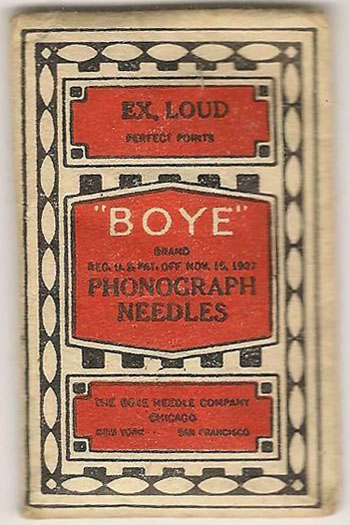
BOYE Phonograph
needles circa 1927
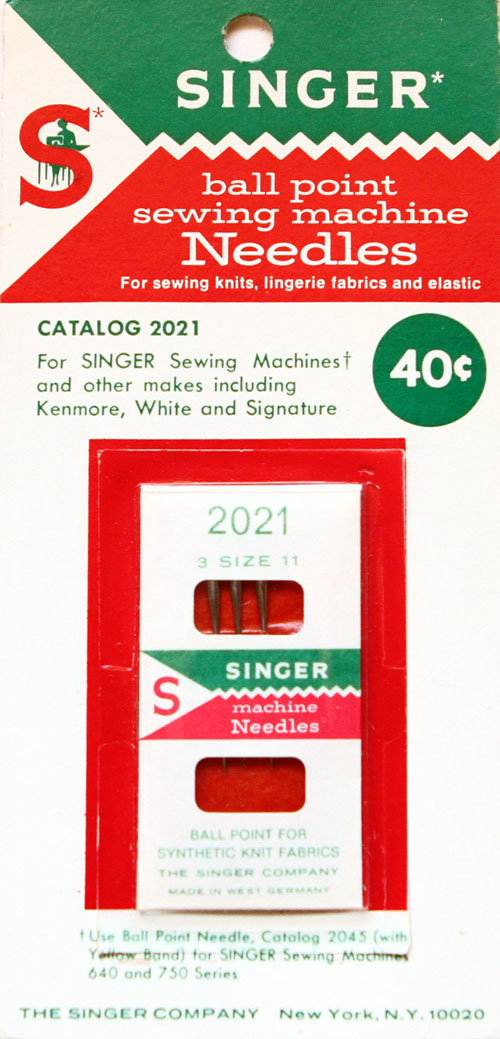
Sewing machine
needles circa 1960
The Singer Sewing
Machine Company made a battery operated Phonograph in 1968,
The Singer Portable Record Player Model HE-2205 which played
45 & 33-1/3 RPM records using 4 D batteries.
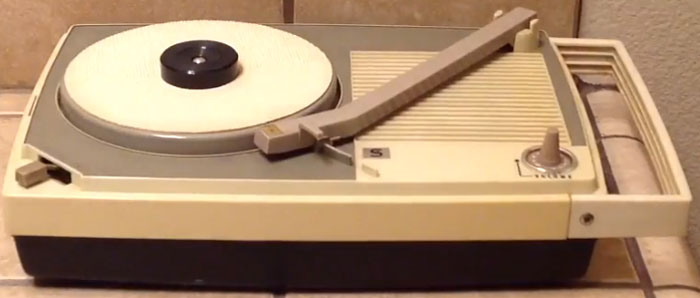
Singer Portable
Record Player Model HE-2205,
circa 1968
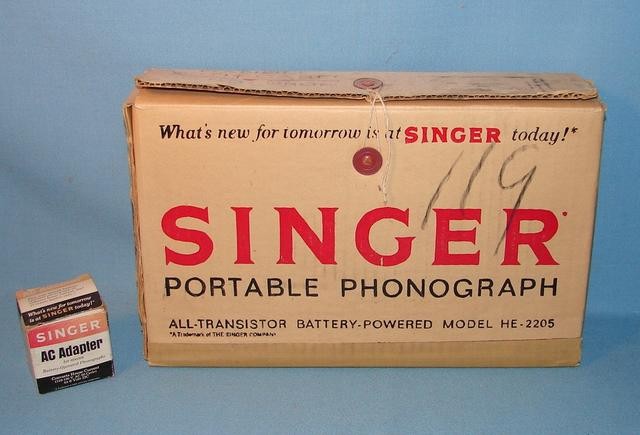

Singer Portable
Record Player Model HE-2210,
circa 1970
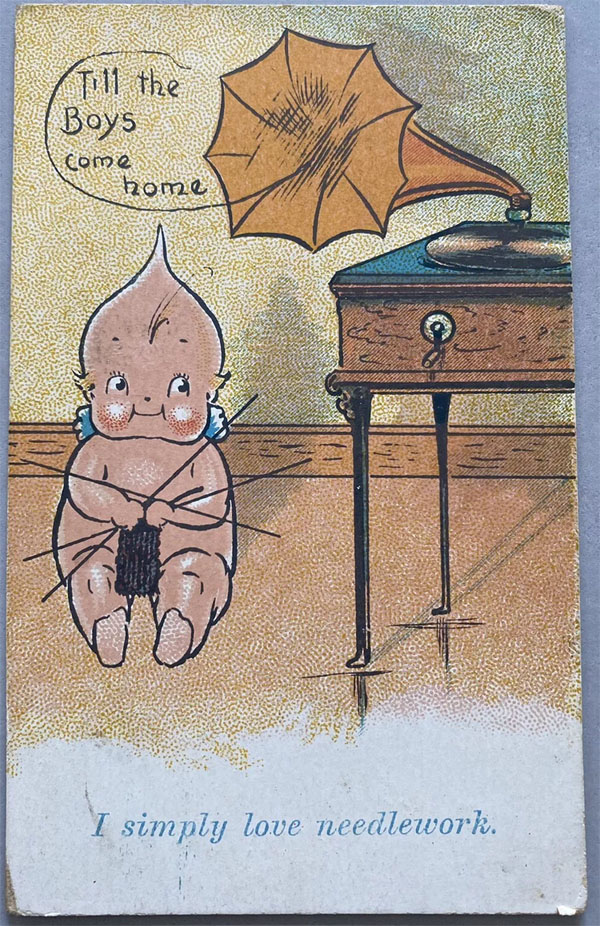
Kewpie with knitting
needles listening to Gramophone playing "Keep the Home-Fires
Burning (Till the Boys Come Home)," circa 1915.
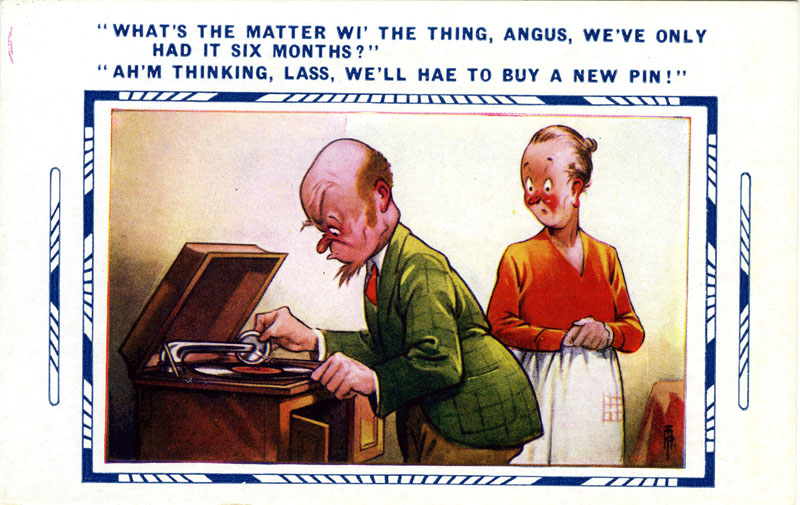
Scotch Comic Series
postcard circa 1930's (PM-0740)
.
The connection between
the sewing machine and the talking machine began with the Punch
cartoon in 1878 and continues into the 21th century (see below
in bold for SIC "Household Furniture" classifications
by the United States Department of Labor OSHA which defines
the following SIC (Standard Industrial Classification) Division
Structure for Division
D: Manufacturing | Major Group 25: Furniture And Fixtures
Industry Group 251: Household Furniture (all of which is saying,
albeit phonographia obscura, that this is another Phonograph
and Sewing Machine connection), as follows:
Description for
2517: Wood Television, Radio, Phonograph, and Sewing Machine
Cabinets
Division
D: Manufacturing | Major Group 25: Furniture And Fixtures Industry
Group 251:
Household Furniture
2517 Wood
Television, Radio, Phonograph, and Sewing Machine Cabinets
Establishments
primarily engaged in manufacturing wood cabinets for radios,
television sets, phonographs, and sewing machines.
Audio cabinets,
wood
Cabinets,
wood: radio, television, phonograph, and sewing machines
Phonograph
cabinets and cases, wood
Radio cabinets
and cases, wood
Sewing machine
cabinets and cases, wood
Stereo cabinets,
wood
Television
cabinets, wood

Phonographia
|



























